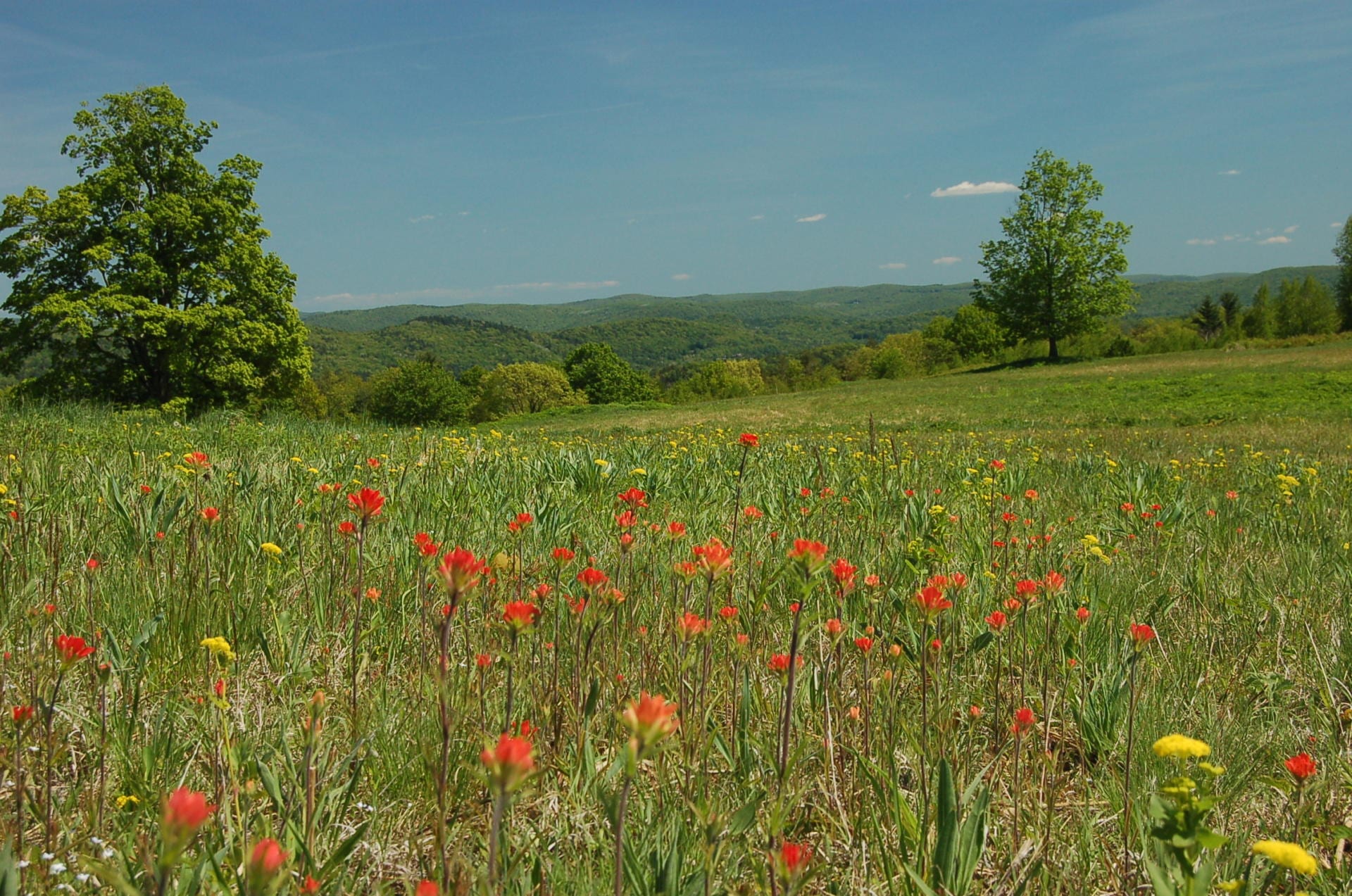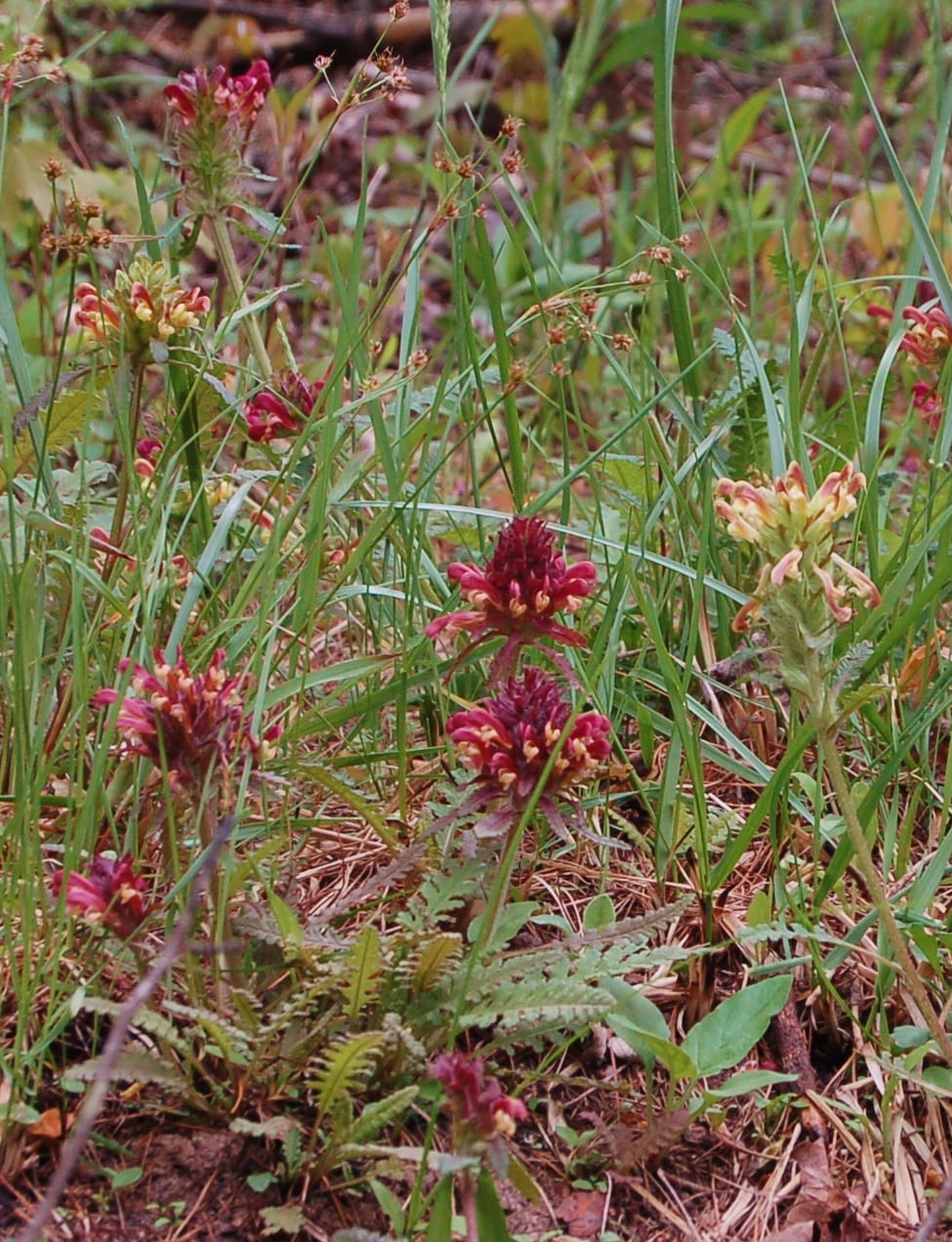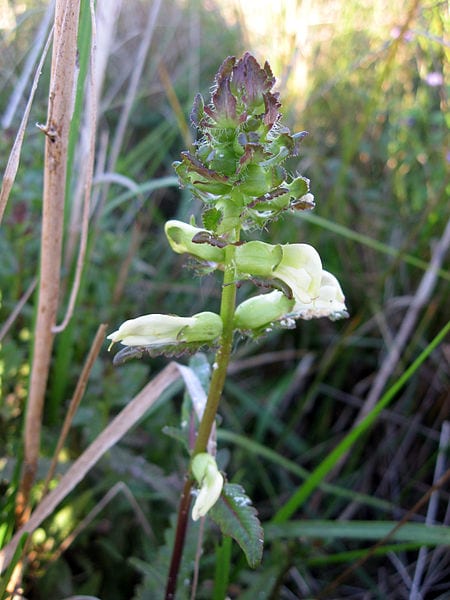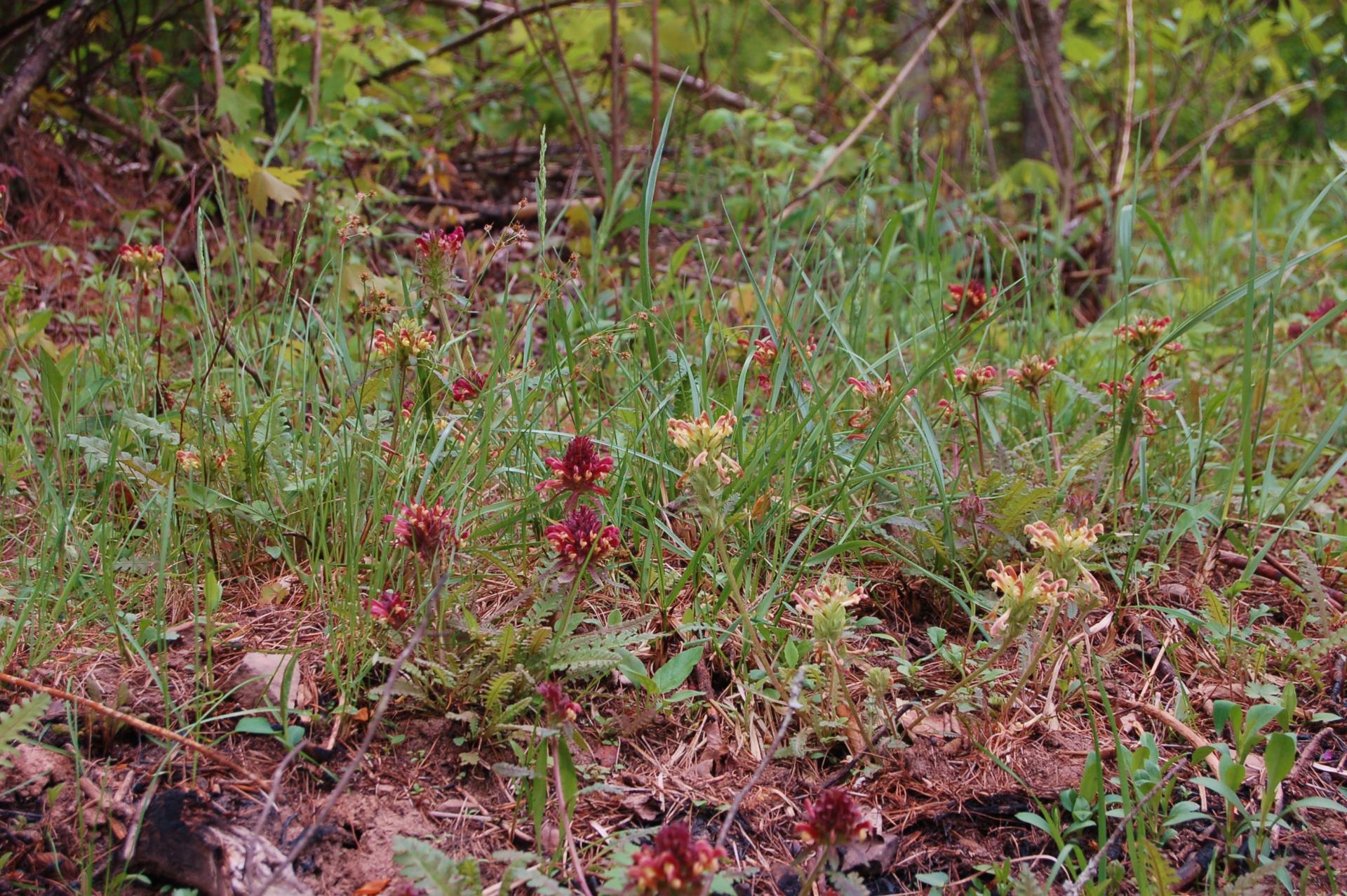by Ian Caton
Parasitic plants for the home garden? The notion usually elicits one of two responses: “Aren’t parasites bad? Why would you want them in your garden?” or “I would love to have them in my garden, but aren’t they uncultivatable?”
My answer to the first response is, “No, not really.” In fact, there is recent research pointing to the presence of parasitic plants in natural systems as being highly beneficial and a sign of a mature, diverse, and healthy ecosystem. Unlike animal parasites, they do not transmit disease or have a significant negative impact on their host as far as anyone can tell. Many parasitic plants are beautiful in flower or fruit and make great landscape plants. Their unusual lifestyle can also provide educational opportunities for classroom gardens, as they show that there is more to plants than meets the eye. As for the second response, regarding having them in the garden…well, the answer is, “Yes and no. It is possible. Mostly.”
Parasitic plants can be broadly categorized into two groups. One group is the truly parasitic plants. These plants depend entirely on another plant for nutrients or water or both. Because of their complex lifestyles, they really are uncultivatable. Enjoy them in the wild. Spread seeds if you like. Maybe some will take…but you cannot grow them deliberately.
There are a few species familiar to most people. The Indian pipe Monotropa uniflora, for one, lacks chlorophyll and cannot photosynthesize. It has a complex relationship with mycorrhizal fungus and trees (especially beech trees) that is difficult to replicate both in a pot and in the home garden. Every year, though, people ask me if I grow it. Sorry, no. Another is Mistletoe Phoradendron leucarpum, which does photosynthesize but also must attach itself to certain trees from which it gets water and possibly some nutrients. This makes cultivation unlikely.

A meadow seeded with Indian Paintbrush (Castilleja coccinea – a hemi-parasitic plant. Photo: Ian Caton
The other group of plants is eminently growable, if you know how. These plants are better described as being hemi-parasitic. That is, they do have chlorophyll and do photosynthesize, and they do have root structures capable of obtaining water and nutrients so that they are semi self-sufficient. They also have specialized root structures, called haustorium, that can penetrate the roots or stems of other plants and draw water or nutrients from them. Because they have the capability of surviving without a host, and because they have green above-ground parts and don’t have complex tree/mycorrhizal relationships, they actually are cultivatable in a nursery and can be transplanted into landscapes.
Species Profiles
Agalinis sp. False Foxglove
There are a dozen or so species of false foxglove. All of them are annuals and all have a similar form: purple foxglove-like flowers on slender wispy stems. Some like wetlands and others prefer drier woodlands or fields. All seem to prefer a certain amount of disturbance, such as fire or flooding, which is not unusual for annuals in general. The two most common species and most readily acquirable as seed are Agalinis tenuifolia and Agalinis purpurea. The former inhabits dry barren habitats, such as limestone barrens and dry prairies or dry woodland edges along roadcuts. The latter has a preference for calcareous marshes and fens. False foxgloves do not have a specific host, but small grasses and wildflowers are typical.
Aureolaria flava. Yellow False Foxglove
There are a number of species of yellow false foxglove, most of which are perennial, but this is by far the most commonly encountered species and the easiest to cultivate…if you happen to have a white oak tree. This bright and cheerful perennial parasitizes the roots of upland oak trees that are in the white oak group, most commonly Quercus alba and Quercus stellata. The plant is large and lush and sometimes looks out of place in the dry, stony, barren oak forests where its companions are often small-leaved, dainty, grey-green plants that are barely hanging on – a testament to the fact that this plant draws a lot of its water directly from the oak on which it grows.
Castilleja coccinea. Indian Paintbrush
There are few red flowers in the eastern flora, and this is not one of them. Rather, the leafy bracts surrounding the flowers are what turn bright red from spring to summer. Few sights are more stunning than an early spring meadow full of this plant. It is fairly uncommon in the east and often found growing on thin, barren, calcareous soils in open fields, fens, or woodland edges. Seeds are hard to collect, as the plant is wispy and hard to find after flowering has stopped. The plant does not have a preferred host, but grasses and small wildflowers are typical.
Pedicularis canadensis. Wood Betony
This plant is as happy growing in a moist meadow as it is growing in a rich woodland. It has a very short stature, usually less than six inches, and broad, deeply cut leaves that are frequently mistaken for being a fern. Flowers appear in the spring and are highly variable in color from yellow to red. Seeds mature midsummer and must be collected and sown immediately for good success. By far, this is one of the easiest and most forgiving of this group of plants to grow.
Pedicularis lanceolata. Yellow Lousewort
This is the wetland version of the above species. It differs, though, in being quite tall (up to three feet) and blooming in the summer. Flowers are a bland, creamy yellow. It is definitely not going to win any awards for beauty, especially compared to its charismatic sibling, but still it has its own charms. Typically growing in calcareous fens and marshes, this plant is actually quite adaptable. It is easy to grow in a pot or by seed.
Pyrularia pubera. Buffalo Nut
There are a number of parasitic woody plants, many of which are either quite rare or have additional requirements that preclude their cultivation. Buffalo nut, however, is relatively common and can be grown and planted out with some success if you are patient. This is a small shrub that is usually found in limestone-rich woodlands and parasitizes any number of woody trees and shrubs. Small greenish-yellow flowers in late spring to summer are followed by odd-looking greenish-yellow fruits that are rather like a tiny quince. This is another plant that won’t win any beauty pageants but can be appreciated by the discerning gardener.
Establishing Plants in a Landscape by Seed
In practice, this is little different than establishing any other plant by seed in a meadow. Seeds should be as fresh as possible, and the site should be appropriately selected for the species being used. The site should be prepared so that whether there is existing growth (desirable host plants) or not (host plants to be seeded along with the parasitic plant), there is plenty of open exposed soil and no buildup of leaves or thatch. Seeds will NOT germinate in thatch or leafy mould or mulch. When purchasing, try to get relatively fresh seed, especially for perennial species (more on that in a moment). If collecting seed yourself, best results will be obtained if it is stored for as short a period as possible. Ideally, collected seeds should be sown immediately.
A few notes on collecting and sowing seeds of specific species:
Agalinis: Seeds are produced in the fall and can be sown anytime between November and April for spring germination. As an annual, the seeds store quite well if kept cold and dry. Host selection: non-specific. Small grasses and wildflowers work best.
Aureolaria flava: Seeds are produced in the fall and have a cold-dormancy requirement. They should be sown in the fall, fresh from the seed pod. If seeds are stored, they may lose viability or become more deeply dormant. Germination will occur in the spring after sowing. Host selection: This is important, as it only parasitizes the roots of the white-oak group of trees like Quercus alba and Quercus stellata.
Castilleja coccinea: Seeds are produced in the summer and typically germinate in the fall or following spring. Seeds can, therefore, be sown almost any time. Best results, though, seem to come from a summer sowing of fresh seed. Host selection: non-specific. Small grasses and wildflowers.
Pedicularis canadensis: Seeds are produced in the summer and quickly go into a deep dormancy or else lose viability. Fresh seed should be sown as soon as it is collected in the fall for best results. Germination doesn’t occur until the following year. Host selection: non-specific. Small grasses and wildflowers are best.
Pedicularis lanceolata: Seeds are produced in the fall and have a cold dormancy and so should be sown between December and January. Germination occurs in the spring after sowing. Host selection: non-specific. Sedges, rushes, grasses work best.
Pyrularia pubera: Seeds are produced in the fall and should be removed from the fruit and sown immediately. Seeds will lose viability if allowed to dry out. Host selection: non-specific except that it prefers woody plants.
Establishing Plants in a Landscape by Growing Live Plants in Pots
This can be a valuable way to get some species established, especially perennial ones, and where a more designed arrangement is desired. Whether on a nursery scale or just for the hobby gardener, there are a few tricks to it. Otherwise, it is no more difficult to grow than a standard perennial.
The most important part of successfully growing these plants in a pot is getting good seed. Old seed is frequently more deeply dormant, and this can cause problems, especially if you are growing the plant with a host. Seed collection and sowing (in pots) should be done according to the schedule outlined above.
The next most important decision is to decide whether to grow the plant with a host or not. Results vary between different growers and between different species. In general, any of these can be grown without a host under controlled conditions in a nursery, where nutrients and water can be provided as needed. The addition of a carefully selected host may improve the growth of some species (especially the annual ones), but even more important is that the use of a host may improve planting success in a landscape. Almost all of the parasitic plants get a lot (not all) of their water from their hosts. This makes them pretty thirsty, which is fine in nursery cultivation. But as soon as they are planted, if they have not been grown with a host, they may die from dehydration. To compensate, you need to plant them close enough to another plant so that a connection is within reach, then irrigate the site for a period of time to allow the plants to settle in.
When I began sowing seeds with a host, I tried sowing seeds onto large open flats with a mix of the parasitic species and a host. This was a mistake, as the host, even a little one like Danthonia poverty-oats, quickly outgrew everything, leading to reduced success. I later grew the parasitic plant alone and transplanted the seedlings into larger pots by themselves. They grew fantastically but often failed to establish in a garden. The trick, then, seems to be to add the host plant later. So, after growing the seedlings into moderately mature plants in a 4-inch quart pot, I added the host either by sowing seed into the pot (most grasses have no dormancy requirements and so will germinate and grow fairly quickly) or by adding small divisions or seedlings to the pot near the crown of the parasite. This worked pretty well for most of these plants except for Aureolaria and Pyrularia. Both of these plants have woody hosts, and this presents a barrier to growing them in a pot with such hosts. Both grow well, though slowly, in a pot alone. Getting them to establish in the landscape really does require careful attention and irrigation to cover their establishment period.
A few notes on host selection for growing in pots: choosing a host to place in a pot is extremely important, as there is limited space in a pot and you do not want to crowd out your parasitic plant. Host species should be of very small stature and of sparse growing habit. For dry upland species, I prefer to use poverty oats Danthonia sp. or pussy toes Antennaria neglecta. For wetland species, I prefer path rush Juncus tenuis or spike rush Eleocharis sp.
Parasitic and hemi-parasitic plants can and should be included in home gardens and landscapes for their aesthetic beauty and their ecological and educational value. They are easier to cultivate than people assume and can be established in gardens with little more difficulty that a traditional plant.
About the Author
Ian Caton has a rich background in horticulture and environmental design with a wealth of knowledge about native plants, natural communities, and their incorporation into the built environment. He is the owner of Wood Thrush Native Plant Nursery in southwest Virginia that offers more than 200 varieties of native and wild plants. Ian has worked for 16 years at Pennsylvania-based Larry Weaner Landscape Associates, where he designs and installs native landscapes for residential, institutional, and public properties.
***
Each author appearing herein retains original copyright. Right to reproduce or disseminate all material herein, including to Columbia University Library’s CAUSEWAY Project, is otherwise reserved by ELA. Please contact ELA for permission to reprint.
Mention of products is not intended to constitute endorsement. Opinions expressed in this newsletter article do not necessarily represent those of ELA’s directors, staff, or members.






